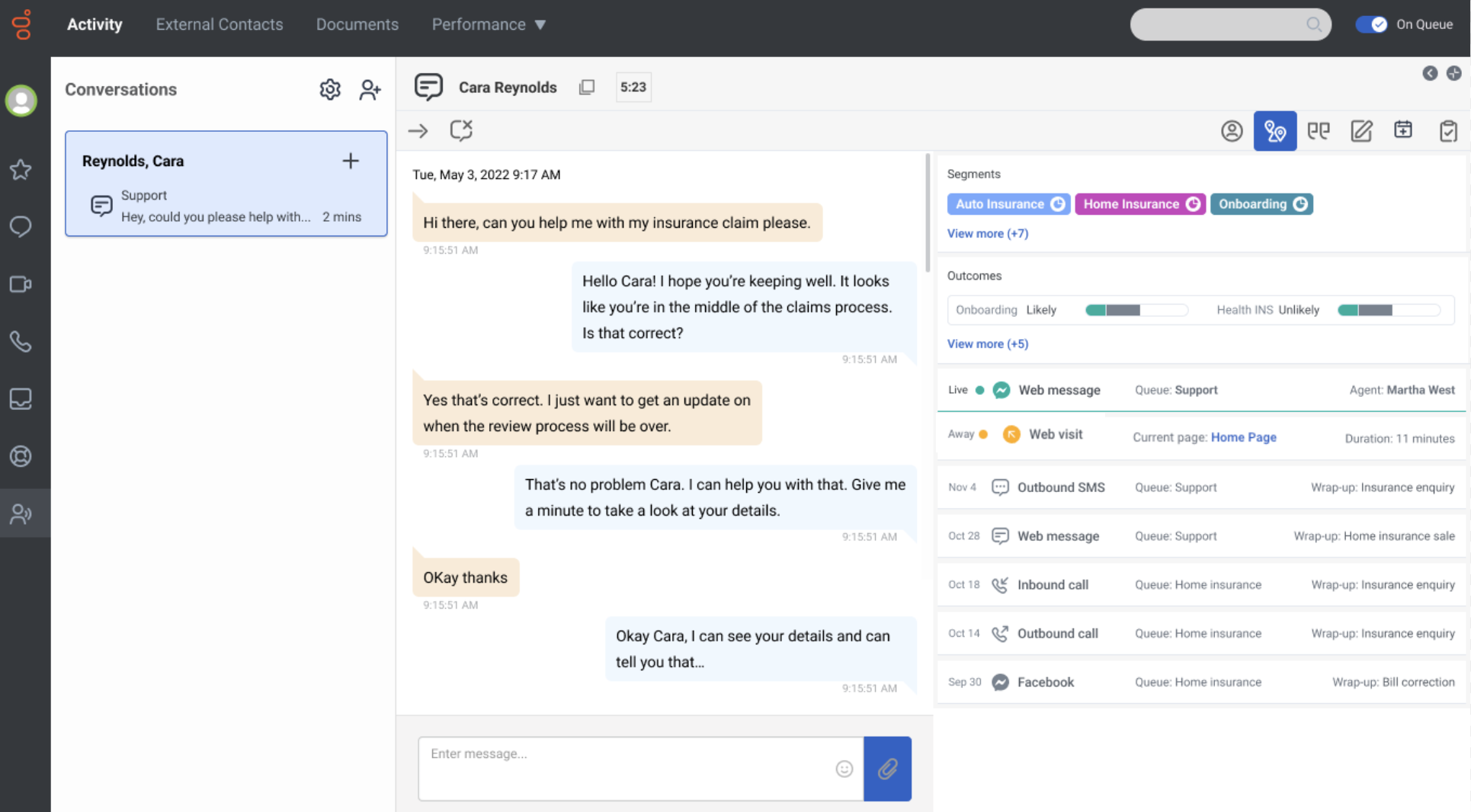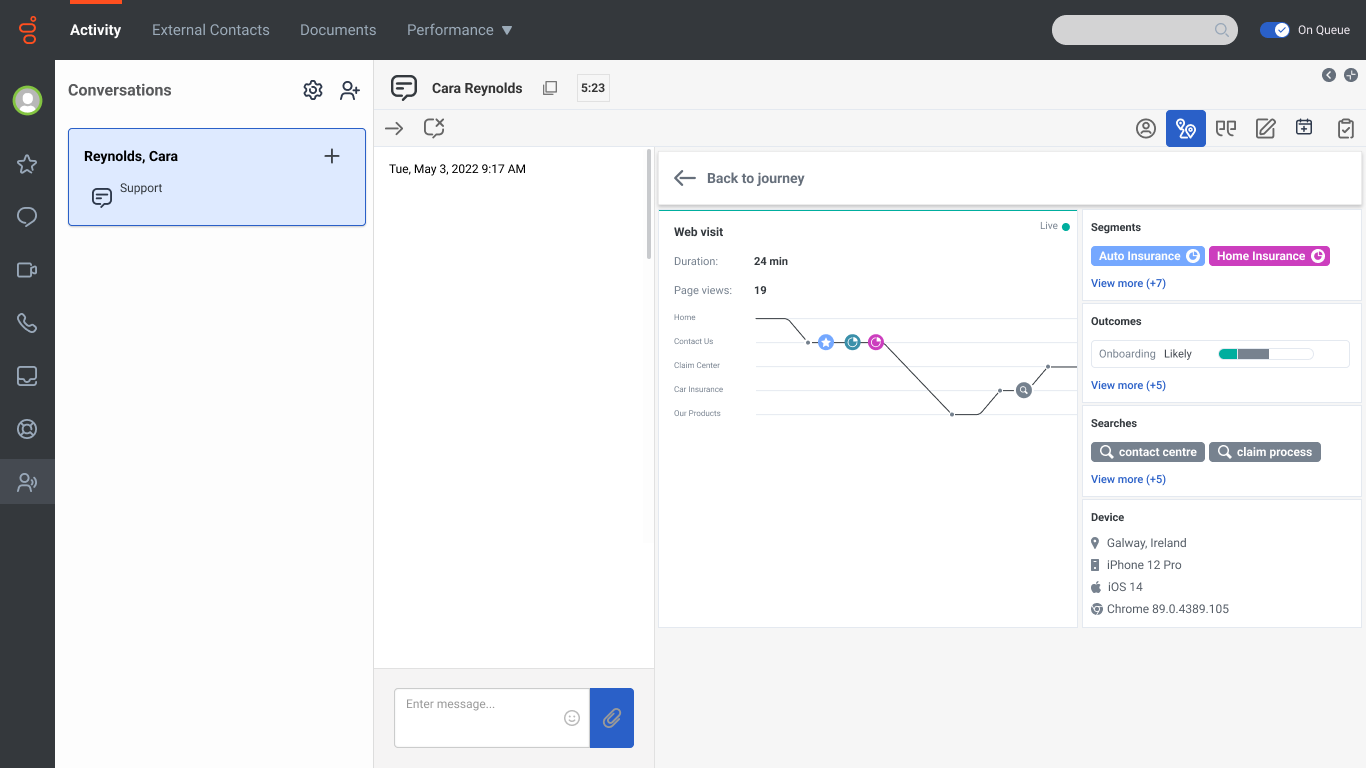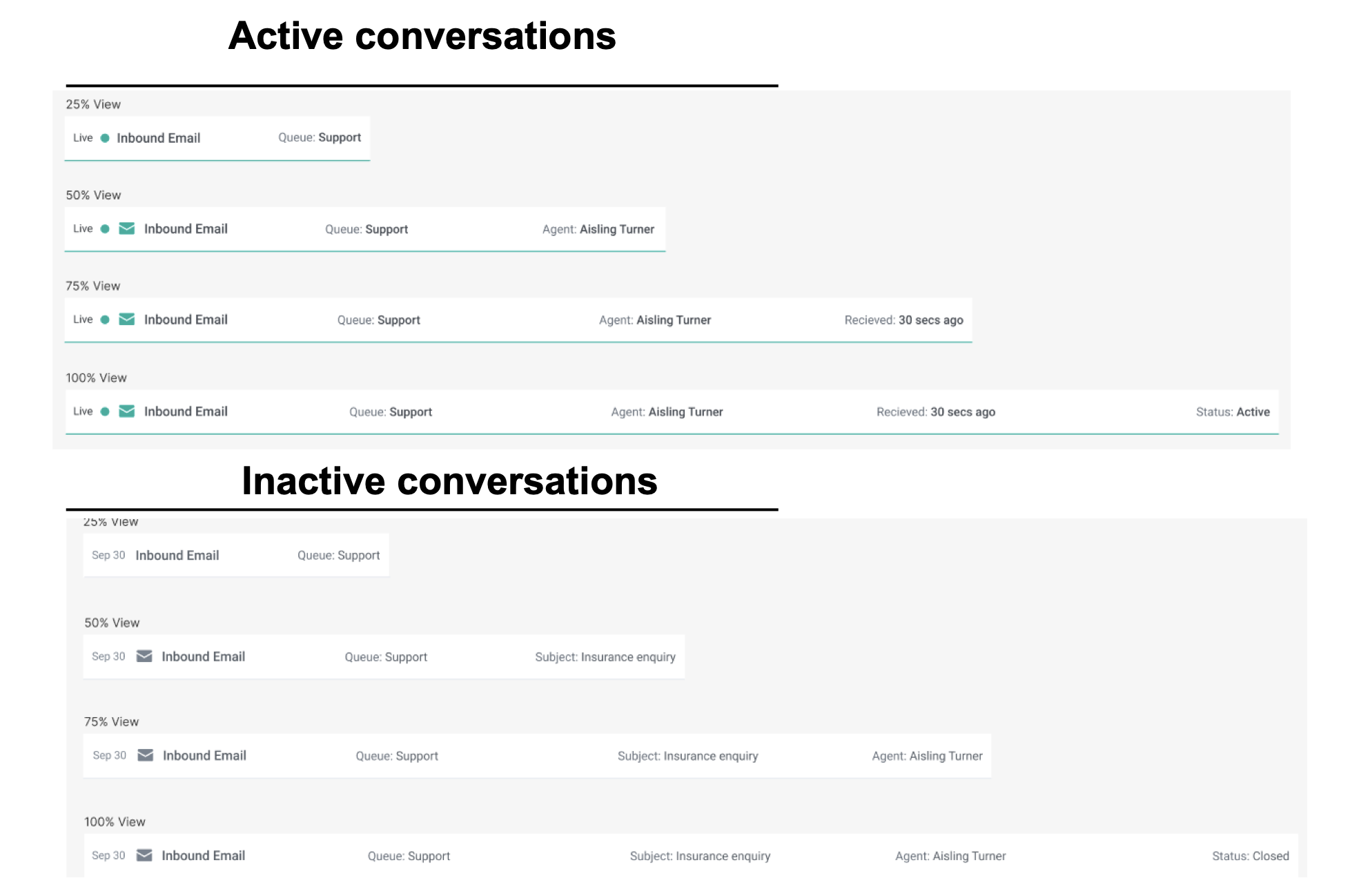An agent's experience in Genesys Cloud CX
Contents
Learn about the customer journey data that Genesys Predictive Engagement presents to agents in Genesys Cloud CX.
Prerequisites
The following permissions are available by default to the role 'User'. If you are creating custom roles, ensure that you add the following permissions to the custom role.
- Configure the following permissions in Genesys Cloud CX:
- Journey > Event > View (core permission to view the Customer journey gadget and to see detailed view web sessions)
- Journey > Event Type > View (to allow customization of web sessions)
- Journey > Session > View (to retrieve list of web session)
- Journey > Session Type > View (to retrieve details of web sessions)
- Journey > Outcome > View (to see outcomes achieved and scores for a visit)
- Journey > OutcomeScores > View (to see real-time predictions)
- Journey > Segment > View (to see matched segments for a visit)
- Routing > Wrap up code > View (to view the wrap-up codes associated with the interaction)
- Routing > Queue > Search (to view the queue the interaction is part of)
- External contacts > Session > View (enables view of customer journey tab)
About customer journey
Using the customer journey tab, you can view an overall summary of the different conversations you have had with the customer and the customer web visits of the websites that Genesys Predictive Engagement tracks. Customer journey information is available for conversations from the following channels:
- Voice
- Inbound calls
- Agent-initiated outbound calls
- Messaging
- Web Messaging
- Web chat
- Digital
- SMS
- Agentless notifications (WhatsApp and SMS)
- Social media
- LINE
- Twitter SM
- Facebook messenger
- Website visits
- Web Events (Genesys Predictive Engagement only)
- Content Offers (Genesys Predictive Engagement only)
Customer journey information is not available for conversations from the following channels:
- Knowledge - Support center
- Agentless email notifications
- Campaigns, including callbacks
- Co-browse
- Instagram DM
To view all the conversations you have had with your customer, click the Customer journey icon:![]()
- The tab lists the different journeys. Click each journey item to view further details in the "Message Details" section. The message details section displays the details of the last queue and the most recent agent who last handled the interaction.
- Genesys Cloud visualizes bot-only conversation sessions (no agent) using the standard conversation session card, and will display data common to bot and agent conversations (e.g. channel, originating direction, duration, some status values)
- Data from the last 60 days are available on this tab.
View a customer's journey
The customer journey map updates in real time as the customer navigates your website, responds to interaction requests, and segments and any outcomes matched.
The customer journey map has the following:
- Segments matched: A segment represents a group of customers that have something in common. For example, a segment might include all customers who use the same browser or are from the same geographic region. Segments appear in the order that Genesys Predictive Engagement assigns them to the customer. You can view the segments that a customer visit matched from both the segment icon on the journey map and from the "Segments" section. For more information about segments, see About segments.
- Searches performed: Knowing what customers searched for on your website prepares you to answer questions that they may have. You can view the search details from both the search icon in the customer journey map and from the "Searches" section.
- Outcomes matched: An outcome represents a particular goal and the colored bars represent the customer's progress toward that goal. For example, if the goal is to purchase a product, the customer's progress moves toward that goal when the customer puts an item in their shopping cart. These bars update in real time as the customer's progress changes. For more information about outcomes, see About outcome predictions and probabilities.
- Device information: Information about the website visitor's device, such as geographic location, device type, operating system, and browser. For information on the icons used to represent the device information, see Device icons.
- Agent and queue details: To view the agent and queue details, click the interaction. The journey tab displays the information at the bottom. If an interaction was transferred between different queues and agents, details of the last queue and agent are displayed.




